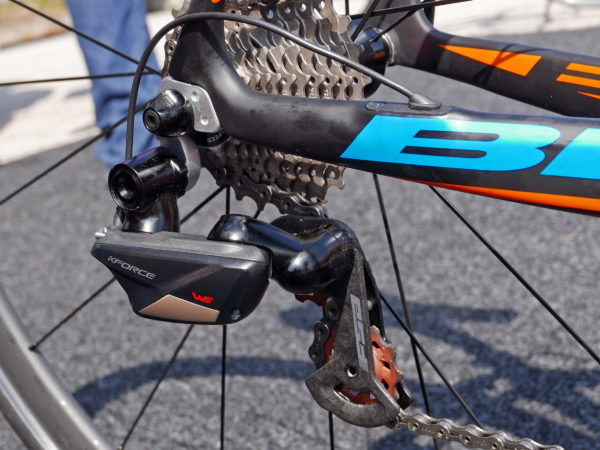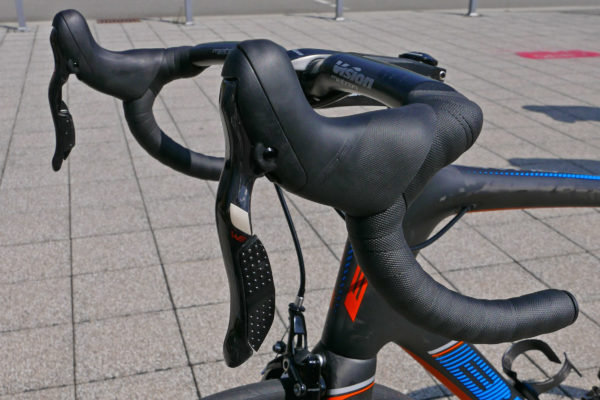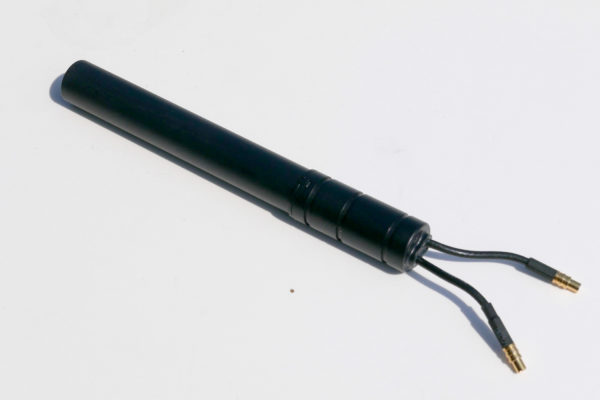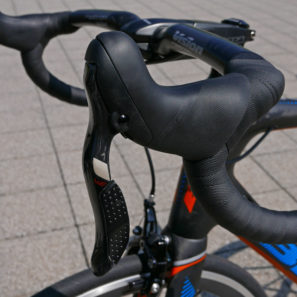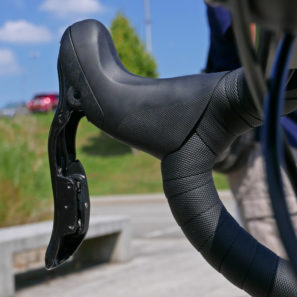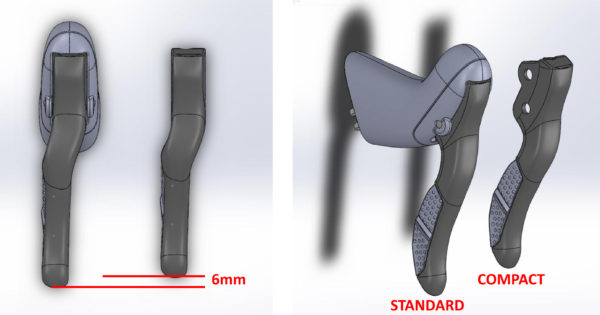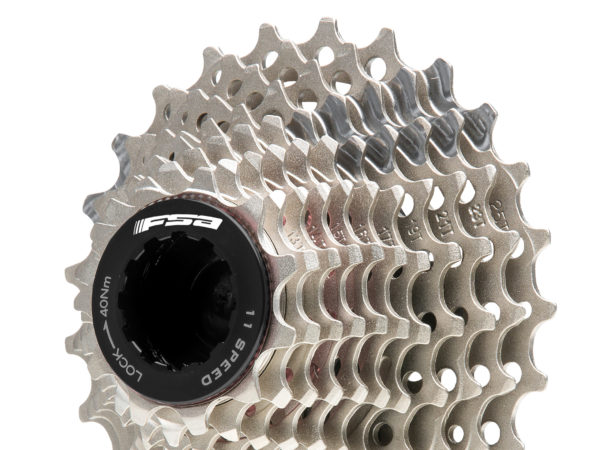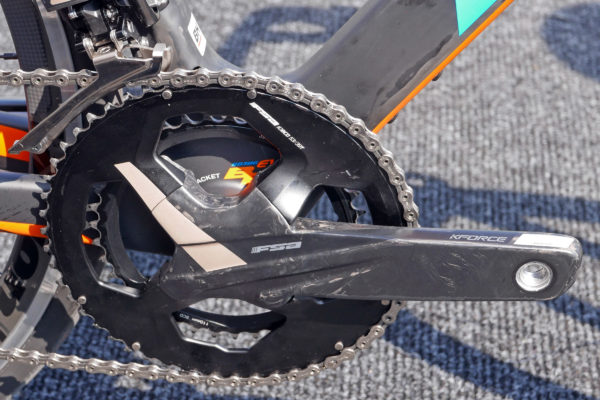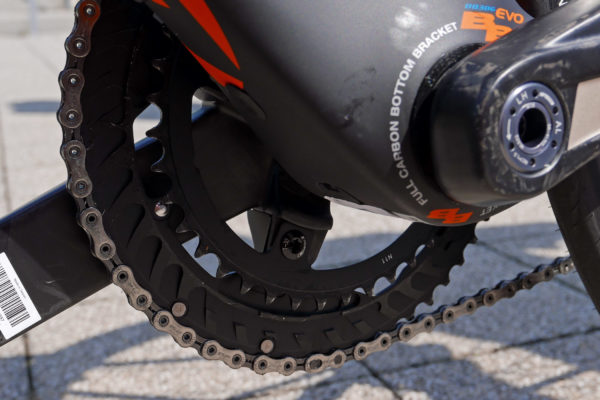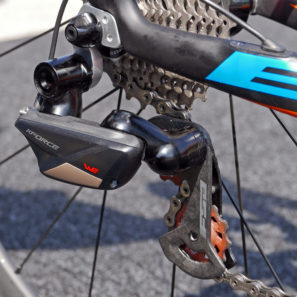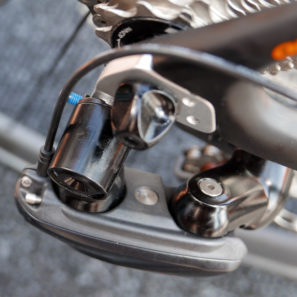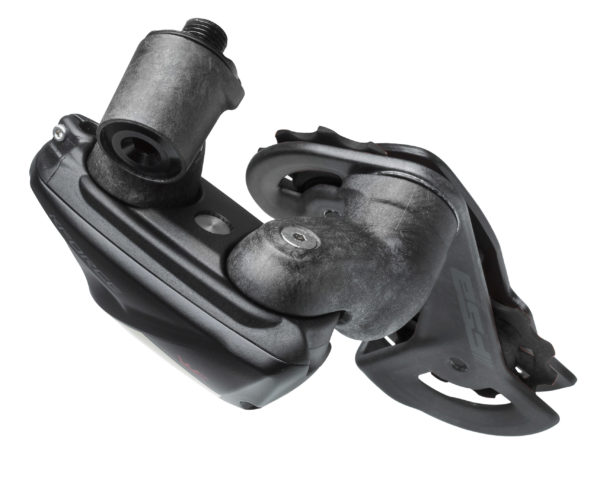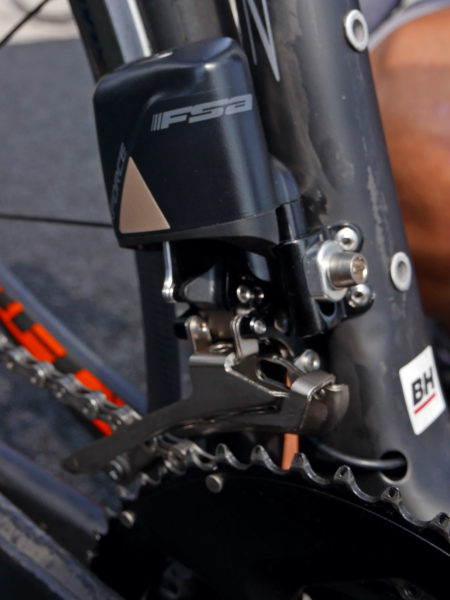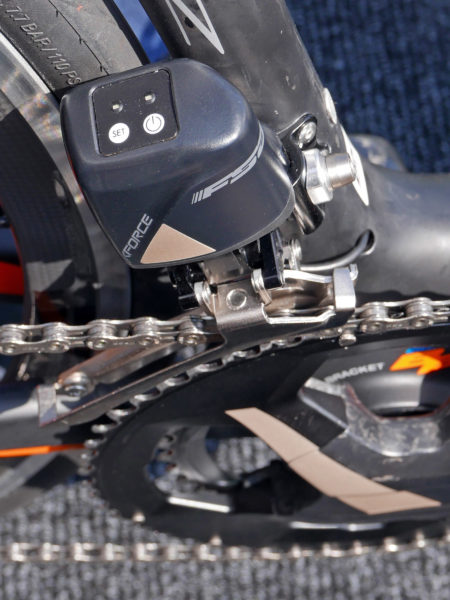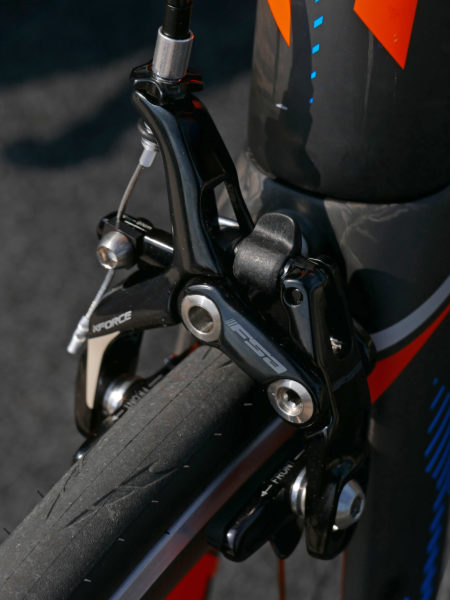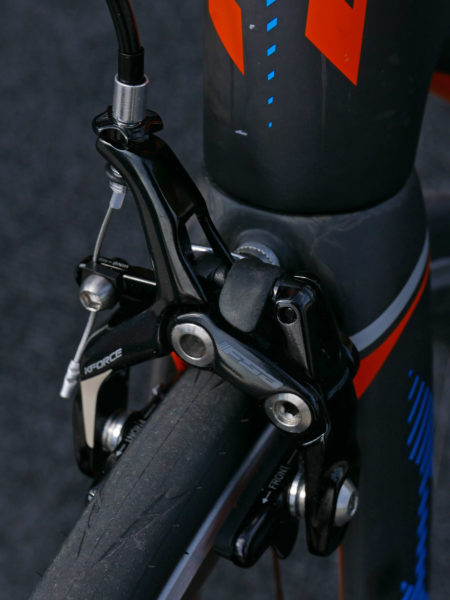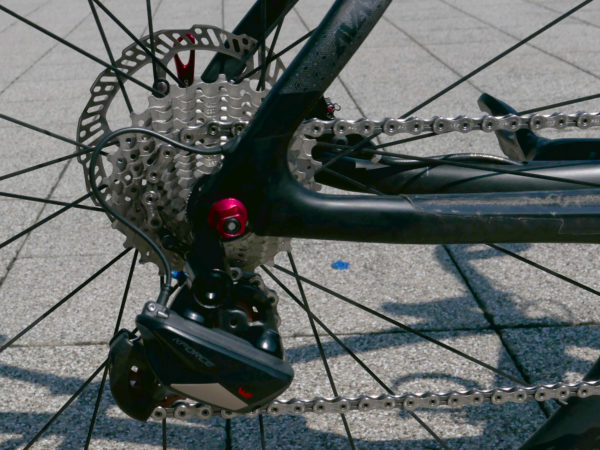We’ve seen the not very guarded wireless group from FSA on bikes for quite some time now, most recently at the Tour de France, and even a countdown timer to today on the new group’s dedicated website. But now it is official. We have all of the details on the new complete groupset, from how it works, to how it charges, and even how much the group will weigh. Along the way there are even a bunch of other new refinements in the rest out the groupset outside of the shifting. Check out our first look after the break…
So as we had assumed before the group takes the top-tier component name of FSA and adds on the WE moniker which stands for wireless electronic. This new K-Force WE kit is a complete road group and finally meets FSA’s need to deliver a full setup to lock in the pros riding their complete drivetrain and component setup.
As we had been told before, the shifting setup works with two independent wireless shift brake levers and then front and rear derailleurs connected by a fixed wire to a single in-frame battery.
Communication wise, the shifters talk wirelessly via a customized ANT protocol just to the front derailleur which acts as the brain of the chain moving system. By using the closed ANT protocol, FSA is able to build in their own security keys and customised communication setup that lets them keep out any possibility of interference.
The front derailleur then has ANT+ communication via that open protocol that allows it to connect to third-party (read: Garmin) cycling computers/GPS head units, but also adds the ability to talk directly with laptops/desktop computers and compatible mobile devices.
One of the big hallmarks that FSA is touting on the new K-Force WE group is its adjustability and user customization. That starts from the electronics side with a wide range of setup and tunability options available though the wireless desktop and mobile apps, connected through ANT+. That will let you rearrange the function of the buttons as you wish, adjust multi-shift options, and energy saving modes. The app also offers detailed tracking of each shift, how much power was consumed, and then how much battery power is remaining.
One of FSA’s biggest reasons for wiring the front and rear derailleurs together was about providing longer battery life and more advanced power management. The result is a setup with a single internal seatpost-mounted 7.4v li-ion battery that claims a 5000km range. And when that time is up, you just unplug the rear derailleur cable (secured with a small hex key to prevent accidental disconnects on rough terrain), plug it in to the included charger and are ready to go again in 90 mins with a full charge.
The shift levers themselves run on a low power optimized ANT communication setup with simple coin cell batteries (1 per lever). FSA claims greater longevity, but say that they will recommend replacing the batteries once a year, no matter the distance ridden.
Tracking shifter count and each shift’s actual energy consumption is part of their greater plan for better energy management. Since the energy consumption of each shift varies depending on whether it was made under load, whether front or rear shifts were made alone or in succession, logging this real energy use allows FSA’s brain to calculate actual reserve battery power based on actual rider habits. So, if you ride aggressively or easily, the drivetrain will report realistic estimates of how much time on the bike is remaining.
ANT+ connectivity means that the group will likely come with a USB dongle for use with a PC, and will at first only be compatible with Android devices. FSA has told us that an iOS app is also in development, and will require the use of one of the several available third-party adapters that enables ANT+ communication to iDevices.
Another of their customization options comes at the setup of the levers for the individual rider. The levers have simple reach adjustment for riders with smaller hands, but FSA is also offering the shift/brake levers with two different brake lever length options (the compact lever is 6mm shorter.)
The K-Force WE group is 11 speed and works with the existing FSA chain and one of three new premium cassettes. The cassettes are to be offered in 11-25, 11-28 & 11-32 gearing options, and use individual hardened steel and larger titanium cogs on a pair of carbon spiders.
The new K-Force WE group also gets a new hollow carbon crankset that incorporates the same tech as the current K-Force. That means that it gets the BB386 tech, with an alloy 30mm spindle, but with a redesigned chainring interface and significantly updated chainring design. In response to requests from input from their pro riders, FSA has also trimmed 3mm off of the cranks Q-factor.
A big part of the new crank is also a new forged then machined 7075 chainring design. A key difference in the 120% stiffer rings is a revised ramp and pin design optimized to handle the much harsher shifts imposed by an electronic front derailleur. A lot of that is just a revised upshift pin design with an inward recessed shape the better grabs the chain plates instead of just pushing them up for better performance under high load.
As we’ve seen the rear derailleur gets an alternative geometry n movement than most derailleurs, and instead of a standard parallelogram uses a body driven by 3 timing gears. BY using gear driven movement, FSA says that they can deliver a more compact shape with exceptionally accurate positioning of the derailleur, while staying clear of other shifting systems’ intellectual property.
While the rear derailleurs we’ve had a look at still have pre-production machined alloy knuckles, we’ve been assured that production parts will replace these with molded carbon parts.
The front derailleur also is gear driven, but uses a rack and pinion gear layout supported by bearings to handle the higher torque requirement of front shifts. The front derailleur also serves as the brain of the entire drivetrain, managing both the ANT & ANT+ communications.
It receives the wireless signals from the shifters and then transmits them through its single wire to the battery and on to the rear derailleur. The front derailleur has four LED colors to communicate remaining battery power: blue shows 100% life, green very good, yellow caution, and then red lets you know that you just have a few kilometers of riding remaining. Of course if you want (or need) more precise remaining battery power, you can pop up the app for full detail.
can also always check via the app?
The group also gets a revised dual pivot K-Force brake too, that FSA’s sponsored pros have been riding all year. The new brake is said to offer improved stopping power, while at the same time building in slightly longer 40-50mm reach. The new brake gets a new multi-position quick release that lets the rider set the pad width for 3 different size rim widths from around 18-28mm (classic to contemporary wide), while now clearing 28 mm tires.
In the end the complete new group is claimed to weigh 2090g total with everything you need to ride away. The new K-Force WE rim brake groupset will open up later this fall around October for the first round of OEM & aftermarket ordering, with the first stages of delivery to make their way to OEMs, distributor, and then customers starting in April & May of 2017. The group is expected to get more full adoption on the pro peloton with full drivetrain sponsorships getting Astana, Cofidis, Direct Energie, Jelly Belly, and more on the group in 2017.
We had a quick look at a hydraulic disc brake prototype version of the K-Force WE setup and will report more on it in a bit. While that variation gets no official launch date yet, it was said to be slated for release a couple of months after the rim brake version, for estimated early summer 2017 availability. There was also talk of a TT version of the group (that would add remote shifters connected to their own independent wireless box), and 1x (that would presumably have to move the brain somewhere else), and both climber & sprinter remote shifters.
Pricing also hasn’t yet been finalized, but FSA assures us that it will be comparable with top road electronic groups from both SRAM & Shimano. While that is a little vague, it does mean that FSA’s K-Force will still be a top, premium offering and won’t undercut Di2 or eTap pricing structures.
